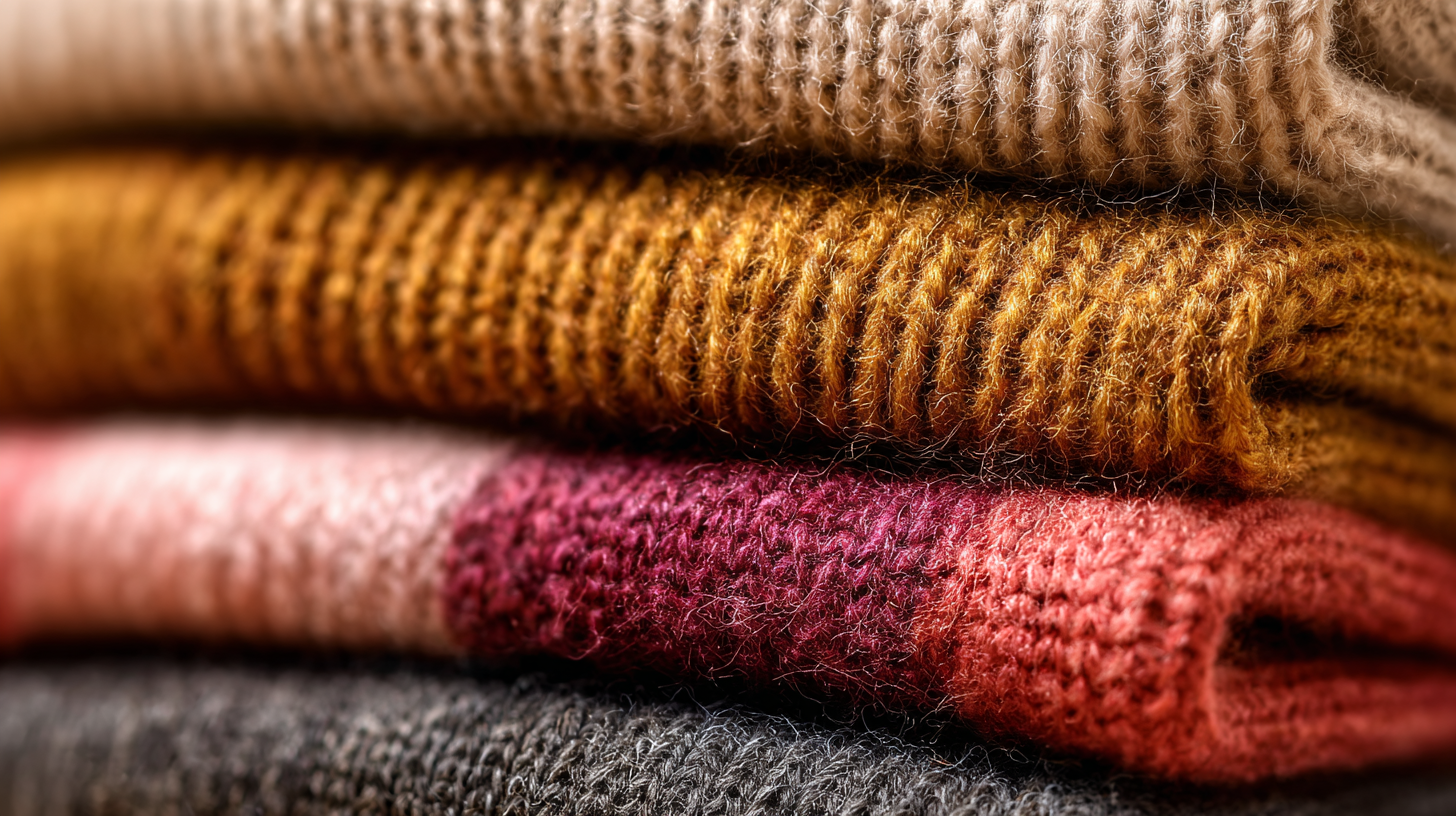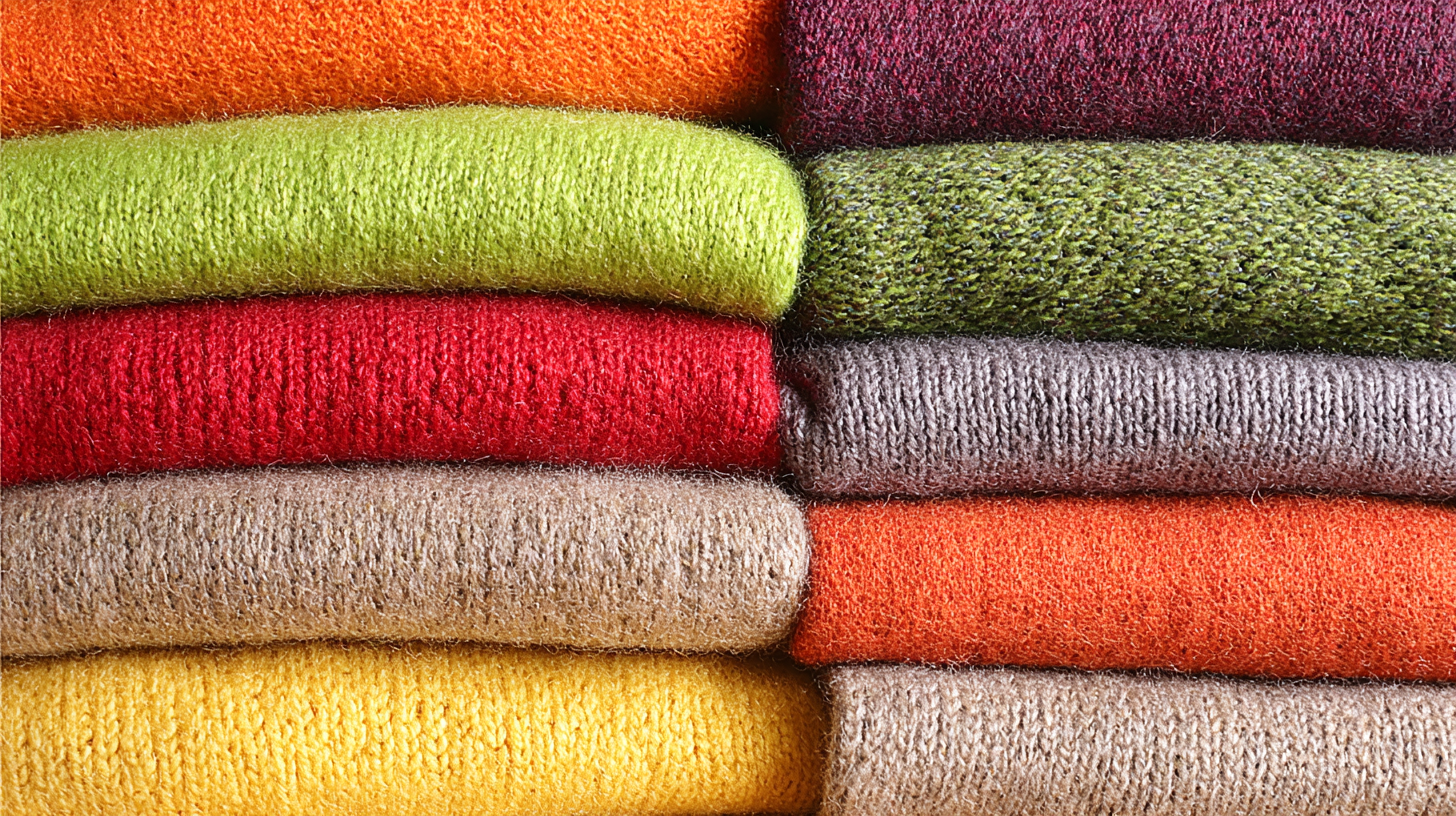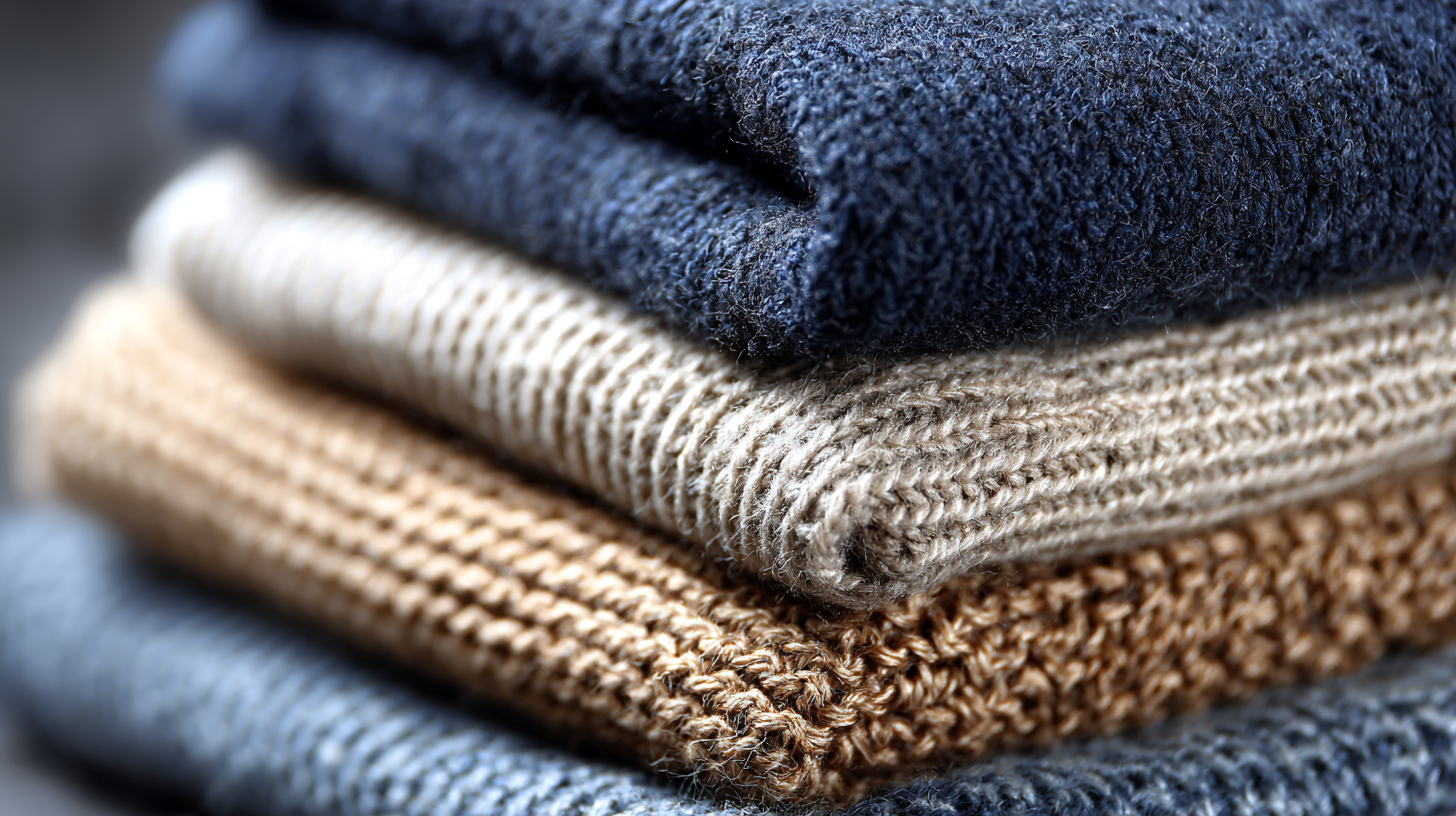In the ever-evolving world of textiles, one category that stands out for its versatility and appeal is Fashion Knitted Fabric. As designers and fashion enthusiasts continue to seek innovative materials that blend comfort with style, understanding the various specifications of knitted fabrics becomes essential. Whether you’re creating a cozy sweater, a sleek dress, or functional athleisure wear, the right fabric can make all the difference in achieving your vision.

This blog will delve into the different types of Fashion Knitted Fabrics available, their unique characteristics, and key considerations for selecting the perfect option to suit your project needs. By exploring alternatives within this realm, readers will be equipped with the knowledge needed to navigate the diverse fabric landscape, ensuring they make informed decisions in their fashion endeavors.
When it comes to choosing the right knitted fabric for fashion, it's essential to understand the different types available and their unique characteristics. Knitted fabrics are typically categorized into two main types: weft and warp knits. Weft knits, such as jersey and ribbing, are made by looping yarn horizontally, which allows for greater stretch and comfort. Conversely, warp knits, like tricot and lace, are created by looping yarn vertically, resulting in a more stable structure that’s less likely to unravel. According to a recent report by Market Research Future, the global knitted fabric market is expected to grow at a CAGR of 5% through 2025, emphasizing the rising demand for fashionable knitted textiles.

When selecting a knitted fabric, consider the fabric weight and drape, which can dramatically influence the final look of your garment. Lighter fabrics are best suited for flowing designs, while heavier knits provide structure and warmth. Tips for making the right choice include sampling different fabrics to assess their feel, stretch, and how they behave upon washing. Another significant factor is the content of the fibers; for instance, cotton knits offer breathability and comfort, while blends like polyester and spandex can enhance durability and elasticity. Prioritizing these factors will ensure that your chosen fabric aligns perfectly with your design vision.
When selecting knitted fabrics for fashion applications, understanding the key specifications is crucial to ensure quality and suitability for your needs. One of the primary factors to consider is the fabric's weight. Lightweight knitted fabrics are perfect for layering and summer wear, while heavier options provide warmth and structure, making them ideal for outerwear. Additionally, stretch and recovery are essential characteristics to evaluate. Fabrics with a high percentage of elastane offer greater elasticity, making them a popular choice for form-fitting garments.

Another vital specification is the fabric's composition. Blends of natural fibers like cotton or wool with synthetics can enhance durability and comfort. For instance, a cotton-polyester blend combines breathability with wrinkle resistance, appealing to contemporary fashion demands. Furthermore, examining the fabric's texture can help in making decisions; smoother fabrics tend to drape beautifully, whereas textured knits can add visual interest and depth to a design. By focusing on these specifications, fashion designers and consumers alike can make informed choices that align with their creative visions and practical needs.
When selecting the right fabric manufacturers, it’s essential to emphasize quality production standards. From 2007 to 2014, textile fiber production saw a significant increase, highlighting the industry's rapid evolution. This growth underscores the importance of assessing manufacturers based on their ability to meet contemporary demands for sustainable practices and quality outcomes. Today's manufacturers are moving away from traditional empirical methods, leveraging advanced computer-aided systems for fabric design and production.
**Tip 1:** When evaluating a manufacturer, inquire about their production process specifications. Look for those that utilize modern technologies, as they often yield better consistency and quality in the final product.
With a growing emphasis on sustainable practices, manufacturers need to demonstrate a commitment to green production. Challenges in the adoption of eco-friendly processes can be significant, but those who succeed often lead the market. Adopting sustainable methodologies not only minimizes environmental impact but also appeals to a more conscious consumer base, making it a crucial factor for vendors.
**Tip 2:** Assess whether prospective manufacturers have certifications or initiatives in place that reflect their commitment to sustainability. This can provide insight into their operational ethos and reliability as long-term partners.
| Fabric Type | Composition | Weight (g/m²) | Stretch (%) | Breathability | Best Uses |
|---|---|---|---|---|---|
| Cotton Knit | 100% Cotton | 180 | 50 | High | T-Shirts, Dresses |
| Polyester Knit | 100% Polyester | 220 | 25 | Medium | Activewear, Sportswear |
| Rayon Blend Knit | 50% Rayon, 50% Polyester | 200 | 40 | High | Casual Wear, Blouses |
| Wool Knit | 100% Wool | 300 | 15 | Low | Sweaters, Scarves |
| Lycra Blend Knit | 95% Cotton, 5% Lycra | 210 | 100 | Medium | Leggings, Fitted Tops |
When it comes to selecting the ideal knitted fabric for your fashion needs, several factors play a crucial role in ensuring that your final product meets both
aesthetic and functional standards. According to a recent report by The Textile Association, the global market for
knitted fabrics was valued at approximately $30 billion in 2022 and is projected to grow at a CAGR of 4.5% over the next five years.
This growth underscores the importance of understanding fabric specifications and how they can influence your fashion creations.
One of the key considerations when choosing knitted fabric is its content. Natural fibers like cotton and wool are celebrated for their breathability and comfort,
while synthetic fibers such as polyester and nylon provide durability and elasticity. A detailed study by the International Textile and Apparel
Association found that garments made from blended fabrics offer enhanced performance qualities, making them attractive for activewear and fashion-forward designs. Additionally, understanding the gauges
and weights of knitted fabrics can help you achieve the desired drape and structure in your creations, ensuring that your designs not only look good
but also fit well and last longer.
Sustainable practices in knitted fabric production are increasingly vital in today’s fashion industry. As consumers become more environmentally conscious, manufacturers are embracing eco-friendly processes that reduce waste and minimize their carbon footprint. This shift not only addresses the pressing concerns of pollution and resource depletion but also sets a precedent for ethical fashion. Using organic fibers, recycling materials, and implementing water-efficient dyeing techniques are some strategies that brands are adopting to enhance sustainability in their production lines.
Moreover, these sustainable practices in knitted fabric production often lead to higher quality products. Fabrics produced with care for the environment tend to be more durable and timeless, leading to a reduced need for constant replacements. As fashion brands prioritize sustainability, they inspire consumers to make more mindful purchasing decisions. By choosing knitted fabrics produced with sustainable methods, shoppers can contribute to a healthier planet while still enjoying stylish, high-quality garments that stand the test of time.